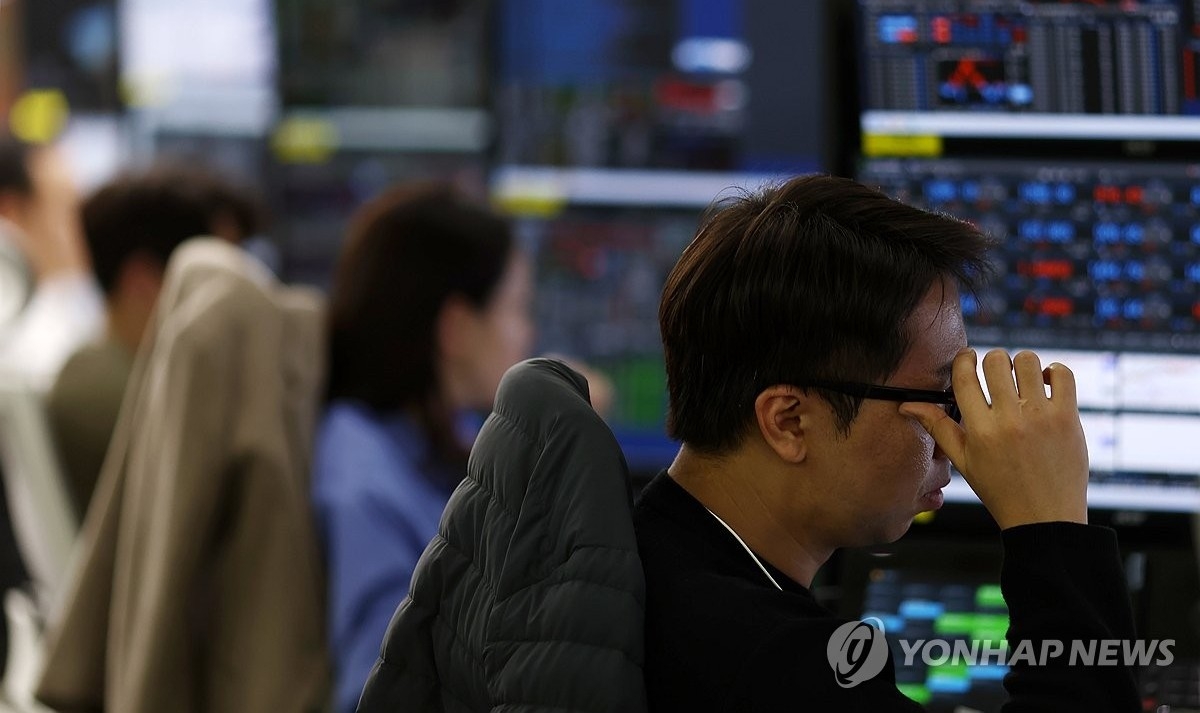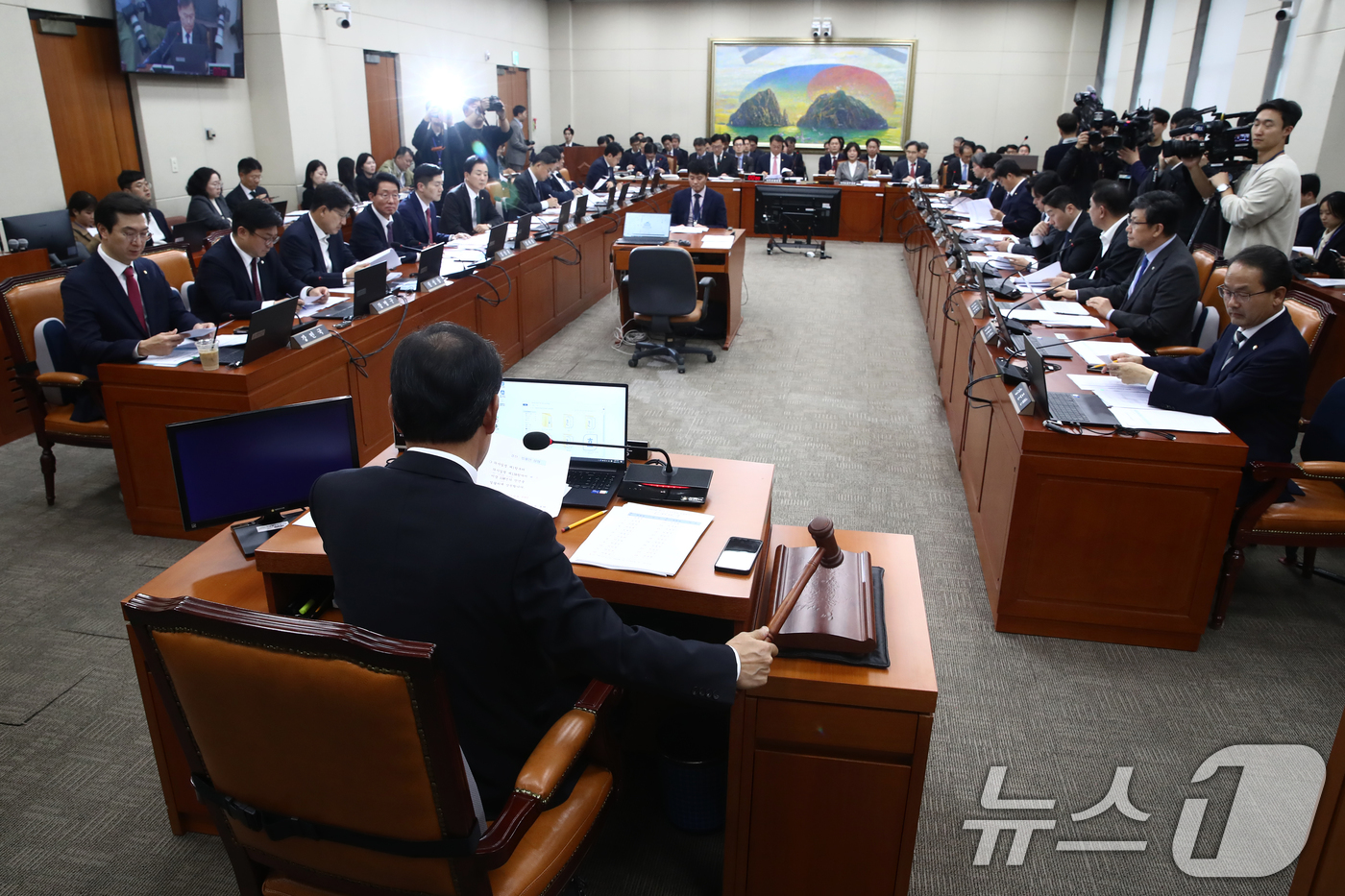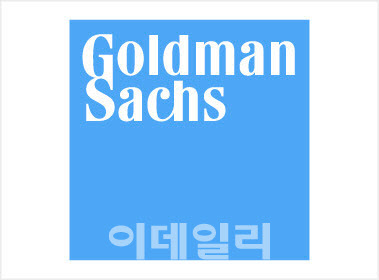- "백약이 무효" 경기둔화 우려에 묻힌 금리인하…증시 투자심리 급랭
- 국내 성장률 전망 하향에 주목…"금리인하는 사후적 조치로 해석" 지속되는 반도체 업황 부진도 부담…"취약한 투심·수급 탓 과도하게 반응" 조성흠 곽윤아 기자 = 트럼프 2기 행정부 출범을 앞두고 글로벌 무역분쟁 우려
![2025: Potential for Global Economic Depression and Collapse of the Korean Real Estate Bubble [1/2]](https://cdn.durumis.com/image/cscku9rp-1idtpbkmq?width=660)
.
On the last day of November, both the KOSPI and KOSDAQ markets in South Korea experienced significant drops, closing sharply lower. The KOSPI fell by -1.95%, and the KOSDAQ by -2.33%.
There are some pointing to a deterioration in investor sentiment as the reason for today's sharp decline in the South Korean stock market.
Trump's administration, from its very beginning, has been actively preparing for a trade war, and domestically, yesterday, the Bank of Korea unexpectedly decided on a 25bp consecutive rate cut, defying the expectations of most institutions. These factors likely contributed to the market's downturn.
Likely, many ordinary investors, upon seeing the Bank of Korea's surprise rate cut following the Monetary Policy Committee meeting and the governor's suggestion of further cuts, thought, 'Is the domestic economy starting to show significant signs of decline?' I had similar thoughts.
And, a few days ago, after much talk and little progress, the ruling and opposition parties reached a sudden agreement to raise the deposit insurance limit from 50 million won to 100 million won. Secretly, I wondered, 'It seems that savings banks and other secondary financial institutions don't have much cash (perhaps due to the effects of PF?).'
If the condition of savings banks etc. due to PF has deteriorated significantly, to allow them to endure while shifting deposits to banks, the first idea that comes to mind is this 'increase in deposit insurance limits.' Therefore, I viewed the decision to raise the deposit insurance limit as a negative signal for the real estate market.
Until now, to avoid stimulating the domestic real estate market, even though signs of an economic slowdown had been visible, the Bank of Korea had refrained from preemptively lowering interest rates. However, this time they deviated from that stance and boldly implemented consecutive rate cuts.
As shown in the news below, with domestic corporate bankruptcies recently hitting a record high, I think the Bank of Korea has begun to acknowledge that the pace of the domestic economic slowdown is accelerating.
Given the current state of the domestic economy, even if consecutive interest rate cuts are implemented, it seems that the Monetary Policy Committee members' stance is shifting toward the belief that it will be difficult for the real estate market to be immediately stimulated.
Although the KOSPI and KOSDAQ indices both took a significant hit today, closing with large red candles, the continued decline until recently has resulted in inverted moving averages and strong resistance, making a continuous rebound difficult technically. However, I still believe that a rebound phase is underway since the short-term bottom of Samsung Electronics on November 15th.
However, even if the rebound continues, reaching the 240-day moving average seems difficult, and perhaps it will only temporarily surpass the 60-day moving average, which is the supply and demand line...?
![2025: Potential for Global Economic Depression and Collapse of the Korean Real Estate Bubble [1/2]](https://cdn.durumis.com/image/ceaqbdtc-1idtpetgv?width=660)
KOSPI Index
![2025: Potential for Global Economic Depression and Collapse of the Korean Real Estate Bubble [1/2]](https://cdn.durumis.com/image/gju2p90m-1idtpf8pg?width=660)
KOSDAQ Index
In this situation, Goldman Sachs's forecast for the Korean stock market has been reported in the news.
They downgraded their outlook for the Korean stock market from "buy" to "neutral," predicting that the KOSPI will reach 2750 points by December next year, stating that the domestic market will face greater challenges next year. A KOSPI forecast of 2750 points at the end of next year, while predicting difficulties for next year, seems contradictory...
A year-end forecast of 2750 points essentially suggests a continuation of the box-trading pattern in 2023 and 2024, which feels inconsistent.
While the domestic economy is in this state, in the United States, Trump's election victory has made it certain that a "tariff bomb" will be unleashed globally starting next year. This is likely to lead to a sharp decline in trade, increasing the burden on export-oriented countries.
Another crucial factor is whether the US economy, which is still robust, can perform well next year even on its own.
South Korea's economy is already showing signs of accelerating deceleration, China's seemingly stimulus measures are merely debt rollovers with limited effectiveness, and Europe, particularly Germany, is entering a recession. Whether the US, which has been holding up relatively well, experiences an economic downturn will significantly influence the global stock market.
![2025: Potential for Global Economic Depression and Collapse of the Korean Real Estate Bubble [1/2]](https://cdn.durumis.com/image/fvlim5eb-1idtpgpo0?width=660)
Under the Biden administration, for about two years, border control was practically nonexistent, leading to a surge in illegal immigration. However, starting in June, the administration shifted to policies aimed at curbing illegal immigration.
Of course, people have various reasons for this shift.
The simplest explanation is that it was a pre-election measure to suppress discontent over illegal immigration as the presidential election approached.
Another reason, a speculative suggestion from an expert on television, is that to fill the unprecedented excess of job openings over job seekers after the pandemic, illegal immigration was deliberately increased. As this excess demand has almost disappeared, the government has started restricting illegal immigration.
The chart below shows the JOLTs job openings and the demand for job seekers (unemployed) from non-farm employment. As we approach the middle of this year, the two lines are almost intersecting. Therefore, there is a theory that the need for external labor supply through illegal immigration has disappeared, and restrictions have been reinstated...
![2025: Potential for Global Economic Depression and Collapse of the Korean Real Estate Bubble [1/2]](https://cdn.durumis.com/image/6gp6fpee-1idtphedv?width=660)
Trend of US Job Openings and Job Seekers
I believe all the stories mentioned above have a degree of plausibility.
However, my view on the main reason why the Biden administration started restricting illegal immigration from June is different. Simply put, it's for the purpose of 'economic data manipulation'.
In early August, the July non-farm employment report showed a rather high unemployment rate, triggering discussions of "Sahm's Law" and claims of entering a recession. Many will remember the market's temporary turbulence.
The chart below shows the trend of the number of unemployed Americans (correlated with the unemployment rate) reported through non-farm employment from March to June this year, highlighted in orange. There was a significant spike at the beginning of the year, and then the unemployment rate continued to rise in April, May, and June. This continued into the July data, and the mention of Sahm's Law during the July unemployment rate announcement caused temporary chaos in the market.
However, restricting the inflow of foreign workers increases the likelihood that those jobs will go to existing unemployed Americans. By restricting illegal immigration, the unemployment rate, measured through surveys of Americans, can be suppressed, at least in the short term.
![2025: Potential for Global Economic Depression and Collapse of the Korean Real Estate Bubble [1/2]](https://cdn.durumis.com/image/94fd7e3r-1idtpi5u3?width=660)
Trend of US Unemployment (Unemployment Rate) and Weekly Continuing Unemployment Claims
- Due to character limits per post, the latter part will continue in Part 2...


![[단독]열달 사이에 1380건… 법인 파산 역대최대](https://imgnews.pstatic.net/image/020/2024/11/21/0003599381_001_20241121105312417.jpg?type=w800?width=140&height=140)
